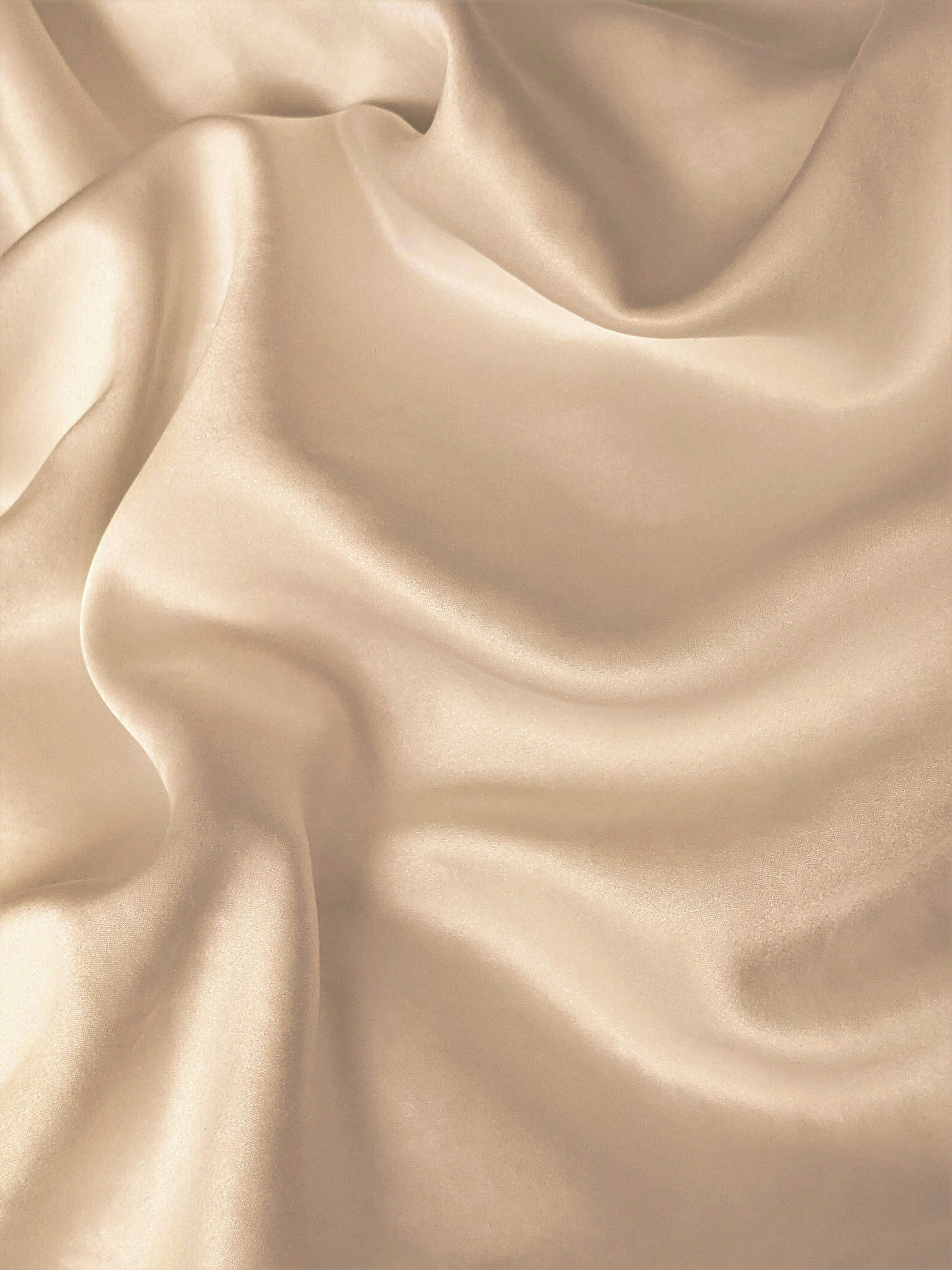イントロ
ギターを選ぶとき、仕上げは最初は表面的なディテールの1つに感じられますが、数時間演奏すると、それは単なる表面的なものではなくなります。ステージの照明の下での楽器の見え方、ソロ演奏中のネックの感触、または表面が時間の経過とともにどのように変化するか:これらはすべて、グロス、マット、またはサテンのどれを選ぶかによって大きく影響されます。
これらの仕上げを純粋にプレイヤー中心の視点から詳しく見ていきましょう。化学やスプレー技術はここでは扱いません。あなたの手と目で感じる経験だけです。
実際に仕上げを光沢またはマットにするものは何ですか?
仕上げの光沢は、表面の滑らかさと光との相互作用によって決まります。グロス仕上げは、光を直接反射する鏡のような表面を作り出すために高度に研磨されており、明るくガラスのような外観になります。一方、マット仕上げは、光を反射するのではなく散乱させる微細な表面の凹凸があり、より柔らかく拡散した外観になります。サテンは、その中間に位置し、柔らかな光沢を提供します。完全なマットではなく、完全に光沢があるわけでもありません。
興味深いことに、表面仕上げに関する科学的研究では、人間の光沢の知覚は、光の強度と表面のテクスチャの両方に非常に敏感であることが確認されています。Marlow et al. (2011) などの研究は、反射率のわずかな違いが、品質と深さの認識に劇的な影響を与えることを強調しています("Marlow, P.J., et al. The Perception and Misperception of Surface Gloss. Current Biology, 2011")。
グロス仕上げ:注目を集める輝き
視覚的な魅力
グロス仕上げは、高級感を醸し出します。光沢のある表面は、木目、模様、楽器の曲線を増幅し、深く、ほとんど液体の外観を作り出します。ステージの照明の下では、グロスギターはあらゆる動きで輝き、視覚的なインパクトを求めるパフォーマーに人気があります。
ただし、その輝きには代償が伴います。欠陥やほこりはグロス仕上げを好みます。すべての指紋、汚れ、および微細な傷は光を捉えます。
触覚的な体験
ガラスのように滑らかなグロスネックは、少なくとも最初は、素早いシフトとスライドを可能にします。長時間の演奏や湿度の高い環境では、汗や湿気で表面がベタつき、不快に感じるプレイヤーもいます。
メンテナンスと耐久性
ショールームのような美しさを維持したい場合、グロス仕上げは定期的な手入れが必要です。 埃を払い、磨きをかけ、丁寧に扱うことがルーチンの一部となります。時間の経過とともに、頻繁に接触する部分は「自然な脱光沢化」を起こす可能性があります。つまり、強い光沢が鈍くなり始め、サテンやマットに移行します。これは避けられないことであり、微細な傷や摩耗が表面の光の反射を変えるためです。
「グロス仕上げはスポーツカーのようなもの。速くて派手で、常に磨きを求めている。」
マット仕上げ:控えめで演奏者重視
視覚的な魅力
マット仕上げは、ソフトで控えめなエレガンスを提供します。光を拡散させ、落ち着いた、ほとんどベルベットのような外観になり、モダンでオーガニックな印象を与えます。木材はより自然に見え、「ガラスの向こう側」にあるように見えることはなく、直接的で正直な美学をもたらします。
マット仕上げは、長時間の演奏後でも楽器をきれいに保ちたいプレイヤーに最適です。 グロスに比べて、指紋や汚れが目立ちにくいです。
触覚的な体験
マット表面は、多くのプレイヤーがその一貫性を高く評価する「ドライ」な感触を提供します。 ここにベタつきはありません。エネルギッシュな演奏中でも、表面は速く、予測可能です。 これは、速い動きが不可欠なネックで特に高く評価されます。
メンテナンスと耐久性
マット仕上げは指紋がつきにくいものの、摩耗の仕方が異なります。 ネックの裏側やアームベベルなど、頻繁に接触する部分は、時間の経過とともに自然に「研磨」される傾向があります。 これにより、摩耗の激しい部分にセミグロス効果が生じ、演奏習慣の視覚的な物語が生まれます。
注意点が1つあります。修理が難しいことです。 マット仕上げの損傷は、研磨によって表面構造が変化するため、光沢のある部分を作らずに修正することは困難です。
「マット仕上げはあなたの物語を語ります。すべてのギグ、すべてのリハーサルが、滑らかな摩耗パターンで書かれています。」
サテン仕上げ:両方の長所を兼ね備えているか?
サテン仕上げは、グロスとマットの中間に位置するハイブリッドです。 完全な光沢のミラー効果なしに、微妙で絹のような光沢を提供します。 視覚的には、ギターに洗練されていながらも控えめな魅力をもたらし、圧倒的な輝きなしに木材の深みを見せます。
触覚的な体験
サテン仕上げは非常に滑らかで、摩擦が少なく、多くのプレイヤーが「速い」および「快適」と表現しています。 グロスとは異なり、長時間の演奏でもベタつきにくく、マットとは異なり、エレガンスさを保ちます。
メンテナンスと耐久性
サテンは比較的メンテナンスが容易で、指紋がつきにくく、目に見える摩耗にも長期間耐えます。 ただし、マットと同様に、接触部分では時間の経過とともに研磨される可能性があり、多くのプレイヤーがギターの個性の一部として受け入れているセミグロス状の光沢が生じます。
「サテン仕上げはバランスが取れています。指の下では滑らかで、見た目は繊細で、メンテナンスが簡単です。」
どの仕上げを選ぶべきか?
最終的に、選択は優先順位にかかっています。
-
人目を引く、ステージ映えする輝きが好きで、多少のメンテナンスを気にしないなら、グロスがおすすめです。
-
自然な経年変化で、控えめで演奏者重視の感触を好むなら、マットが最適です。
-
両方の長所を少しずつ取り入れたい場合は、サテンが完璧な中間点を提供します。
間違った選択はありません。あなたの演奏スタイルと楽器との関係に最も適した仕上げを選ぶだけです。
最後の考察
仕上げの選択は、見た目だけにとどまりません。 楽器を手に取るたびに、どのように楽器と繋がりたいかという決断です。 グロス仕上げは、まばゆいばかりの輝きで魅了し、手入れを必要としますが、磨き上げられた高級感のある美しさであなたに報います。 対照的に、マット仕上げは親密で触覚的で、あなたと一緒に優雅に年を重ね、毎日の手入れをあまり必要としません。 サテン仕上げは、これらの世界をバランスさせ、控えめなエレガンスとスムーズな演奏性の両方を提供します。
しかし、おそらく最も重要な真実は、すべての仕上げは進化するということです。光沢のあるギターは、演奏頻度の高い箇所から徐々に鏡のような完璧さを失い、サテンのような柔らかさを持つようになるかもしれません。マット仕上げは、手が自然に触れる場所に光沢のあるハイライトが現れ、音楽の旅の視覚的な地図を作り出すでしょう。サテンもまた、時間の経過とともにあなたのタッチの痕跡を明らかにするでしょう。これらは欠陥ではなく、生命の兆候、音楽が作られた証、そして音と木に書かれた物語なのです。
したがって、どの仕上げが客観的に「優れているか」を問うよりも、本当に重要なのは、どの仕上げが、思い出を共に作り上げていく楽器とのあなたの関係を反映しているかということです。
初日だけでなく、長年の演奏と進化を通して、あなたの演奏スタイル、メンテナンスの習慣、そしてあなたのギターに語らせたい美的物語に共鳴する仕上げを選んでください。
「あなたの仕上げは、明るく輝くか、静かに囁くかに関わらず、あなたの物語を反映します。」





シェア:
IRYW:美しいギターは、より良い音を奏でます
2025年 ギタートレンド:素材、仕様、スタイル、そしてサウンド